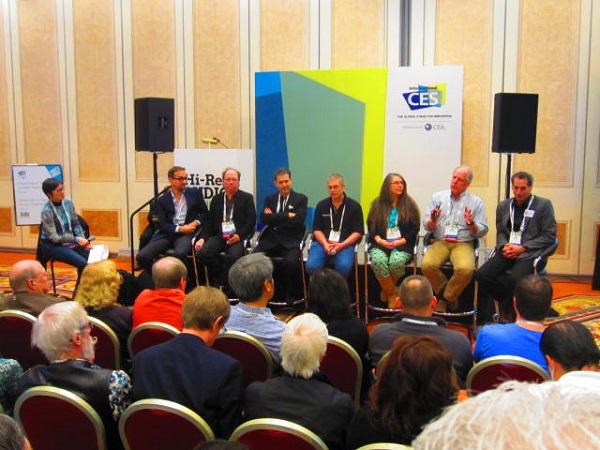Welcome to the Hi-Res Music World, Part One: Record Labels
The moderator of the first panel was Alex Pham, senior correspondent at Billboard magazine. The panelists comprise: Mark Piibe, EVP, Global Business Development, Sony Music Entertainment; Jim Belcher, VP, Technology and Production, Universal Music Group; Norman Chesky, co-founder and president, HD Tracks; Chad Kassem, founder and CEO, Acoustic Sounds; Cookie Marenco, founder, Blue Coast Music; Mark Waldrep, founder and president, iTrax.com; and C. Jared Sacks, managing director, Native DSD Music.
The panel was a feisty group with many thoughts on where hi-res music is heading. Hi-res music is certainly not a done deal. Unlike CD, for example, it is not a monolithic standard owned by 1 or 2 companies. Rather, hi-res music is more of a grass-roots movement that is very much a work in progress. The panel debated the basic tenants of what hi-res music is. For example, can a 50-year old recording of Miles Davis, still widely regarded for its fidelity, qualify as a hi-res recording? Or, does its vintage analog-tape origin disqualify it from today's highest forms of audio technology? Conversely, should a modern pop recording, recorded on the best of today's technology, but with loads of artistically placed distortion, qualify as hi-res?
From a retailing standpoint, how do we educate an audience of listeners who are entirely comfortable with low-res downloads and cheap earbuds? Record stores used to be the place to introduce new music and new playback methods. Now, there are no record stores. Will consumers be willing to pay more for hi-res? And why should they be asked to pay more, when the cost of providing higher fidelity is relatively low? An even more perplexing question is the playback equipment; to properly hear hi-res, or to even hear a difference between hi-res and lo-res, an investment in higher-end equipment is needed. Will consumers pay for that?
Questions were more prevalent then answers - not an unexpected situation with an emerging market like this. The panelists expressed a wide range of views, and often disagreed with one another. But differences aside, the group was cautiously confident that the hi-res market is growing, and with some care and feeding, it could play an important role in the music business.
Read "Welcome to the Hi-Res Music World, Part Two: Music Creators" here.














































